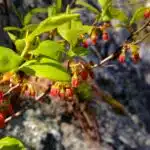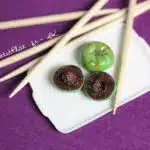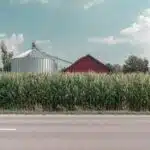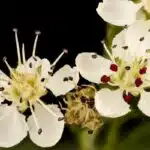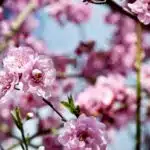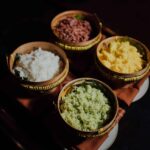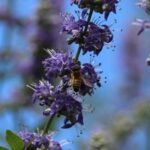Black Knot is a fungal disease that affects plants of the Prunus species, including plum, cherry, and apricot. This disease can cause extensive damage to trees and shrubs if left untreated. As a plant care expert, it is crucial to identify the symptoms of Black Knot and implement appropriate treatment methods in order to prevent the spread of this disease.
In this article, we will discuss how to identify, treat, and prevent Black Knot in your plants. We will cover the signs and symptoms of this disease, as well as the different treatment options available. By following our expert advice on plant care, you can ensure that your garden remains healthy and free from harmful diseases like Black Knot.
What Is Black Knot?
Black knot is a fungal disease that affects various species of trees, particularly the Prunus genus. The fungus, known as Dibotryon morbosum, infects the tree through wounds and other surface damage. Once inside the tree, it can grow undetected for several years before producing visible symptoms.
The most common symptom of black knot is the appearance of dark, rough galls or swellings on the branches and twigs of infected trees. These galls can range in size from a few inches to several feet long and may be smooth or rough in texture. They often start out green or brown but turn black as they age.
If left untreated, black knot can cause significant damage to affected trees and even lead to their death. Fortunately, there are several treatment and prevention methods available to help control the spread of this disease. Fungicides can be applied to affected trees to kill the fungus, while pruning infected branches can also help limit its spread. Preventative measures such as keeping trees healthy with regular fertilization and pruning dead or diseased wood can also reduce the risk of infection.
As we delve into plants affected by black knot, it’s important to note that early detection and prompt action are key in preventing its spread.
Plants Affected By Black Knot
Black knot is a fungal disease that affects a variety of plant species, including cherry, plum, and apricot. It is characterized by the presence of black, swollen growths on the branches of infected plants. These growths can range in size from small knots to large galls that cover significant portions of the branch.
The impact of black knot on plant growth and yield can be significant. In addition to causing physical damage to the branches, the fungus also disrupts the flow of nutrients and water through the plant’s vascular system. This can lead to stunted growth, reduced fruit production, and eventual death of the plant if left untreated.
Common plant species affected by black knot include sweet cherry (Prunus avium), sour cherry (Prunus cerasus), plum (Prunus domestica), and apricot (Prunus armeniaca). These plants are particularly susceptible to infection during periods of wet weather when spores from infected plants are easily spread through rain or wind. It is important for gardeners to be vigilant in monitoring their plants for signs of black knot and taking appropriate steps to prevent its spread.
Causes Of Black Knot
Black knot is a fungal infection that affects multiple species of trees, especially fruit-bearing ones like plum and cherry. The fungus, known as Apiosporina morbosa, infects the tree through wounds or openings in the bark. Once inside the tree, it forms a distinctive black gall that gradually grows larger over time until it encircles and kills entire branches.
There are several causes of black knot infections, including improper pruning techniques, which create open wounds that allow the fungus to enter. Additionally, overcrowding of trees can lead to increased humidity levels and decreased airflow, creating an ideal environment for fungal growth. Finally, lack of proper sanitation practices can allow infected plant debris to accumulate and provide a breeding ground for spores.
To prevent black knot infections from occurring in the first place or spreading to other trees in the area:
- Properly prune all trees annually, removing infected branches at least 4-6 inches below any visible signs of the disease.
- Space out trees adequately to provide adequate air circulation
- Clean up all fallen leaves and debris regularly to avoid potential breeding grounds for spores.
By following these preventative measures and understanding the causes of black knot infections, you can ensure your trees remain healthy and free from this devastating disease. In the subsequent section we will explore common symptoms of black knot infections and how to identify them early on.
Signs And Symptoms Of Black Knot
The first sign of black knot is the appearance of small, olive-green swellings on the branches of infected trees. These growths eventually enlarge and turn black, giving the disease its name. As the fungus spreads, it can cause significant damage to the tree’s bark and wood, eventually leading to branch dieback or even death.
Diagnosis techniques for black knot include careful observation of a tree’s physical symptoms and conducting laboratory tests on samples taken from affected branches. It is important to note that black knot can be misidentified as other diseases or natural occurrences such as insect or animal damage, knots caused by rough bark, or even benign growths on certain tree species. Therefore, it is essential for proper identification to consult with a plant care expert who has experience in identifying and treating this particular disease.
Early detection of black knot is crucial in preventing further spread and minimizing damage to trees. By regularly inspecting trees for signs of infection and taking prompt action when necessary, homeowners and gardeners can help limit the impact of this disease on their landscapes. In the next section, we will discuss some methods for detecting black knot early on in its development stage.
Early Detection Of Black Knot
As discussed in the previous section, black knot can cause significant damage to trees if left untreated. Early detection techniques are crucial in order to prevent the spread of this disease. The first step in early detection is identifying black knot symptoms.
Black knot symptoms can be identified by looking for dark brown or black knots on tree branches. These knots will often appear swollen and irregularly shaped, and may range in size from a few inches to several feet in length. As the disease progresses, these knots will become harder and more woody in texture.
If you suspect that your trees may have black knot, it is important to act quickly to prevent the spread of the disease. Early detection techniques include inspecting trees regularly for signs of infection, pruning infected branches as soon as possible, and properly disposing of any infected material. By taking these steps, you can help prevent the spread of black knot and protect your trees from further damage.
Moving forward, cultural controls for black knot prevention are an essential part of any comprehensive plant care plan. In the next section, we will discuss some effective cultural controls that can help keep your trees healthy and free from infection.
Cultural Controls For Black Knot Prevention
Like a gardener tending to a precious garden, preventing black knot requires vigilance and care. Cultural controls are an effective method to prevent the disease from taking hold in the first place. Companion planting is an excellent strategy that reduces the spread of black knot spores. By planting resistant plants alongside those susceptible to black knot, you create a barrier against the fungus’s spread.
Soil amendments can also help prevent black knot from taking root in your garden. Adding organic matter like compost or manure can reduce soil compaction and improve soil drainage, which makes it more difficult for the fungus to thrive. Plus, adding beneficial fungi like mycorrhizae can enhance plant root growth and make them more resistant to diseases like black knot.
In addition to companion planting and soil amendments, good sanitation practices are crucial for preventing black knot spread. Remove any infected branches promptly and dispose of them away from your garden area. Also, avoid overhead watering since wet leaves provide ideal conditions for fungal growth. These cultural controls are simple yet highly effective methods for preventing black knot from taking over your garden. In the next section, we will examine chemical controls that can be used if preventative measures fail.
Chemical Controls For Black Knot Treatment
When it comes to treating black knot, there are two main options: chemical and organic treatments. Chemical treatments involve the use of fungicides, which are designed to kill the fungus responsible for black knot growth. Organic treatments, on the other hand, rely on natural methods like pruning and sanitation to control the spread of the disease.
While chemical treatments can be effective in killing off black knot, they may not provide a long-term solution. Fungicides will need to be reapplied regularly in order to prevent new infections from forming. Additionally, some types of fungicides can be harmful to beneficial insects like bees and butterflies. For this reason, many gardeners prefer organic methods that do not pose a risk to other plants or wildlife.
Ultimately, the choice between chemical and organic treatment will depend on your individual situation and preferences. If you are looking for a quick fix or have a severe infestation that needs immediate attention, a chemical treatment may be your best option. However, if you are committed to long-term sustainability and want to avoid potential harm to other plants and animals, an organic approach may be more suitable for you.
Transition:
Now that we’ve discussed the pros and cons of chemical vs organic treatment for black knot management, let’s take a closer look at pruning techniques that can help prevent the spread of this disease.
Pruning Techniques For Black Knot Management
Chemical controls are an effective way to treat black knot disease, but pruning techniques should also be employed for long-term management. Pruning is the most important cultural practice for controlling black knot, and it involves removing infected branches before they become a source of spores. Timing is crucial for pruning because it should be done during the dormant season or when the tree is not actively growing.
To properly prune, first identify infected branches by looking for swollen areas on the wood that are green or brown in color. These areas will eventually turn black and produce spores that can infect other parts of the tree. Cut at least 4-6 inches below the infected area and dispose of all pruned material far away from the tree to prevent further infection. Repeat this process annually, as new infections can occur each year.
Timing considerations for pruning also include avoiding pruning during wet weather conditions or when temperatures are above freezing. This prevents spores from spreading easily and infecting other parts of the tree or nearby trees. Proper timing combined with regular pruning can help control black knot disease over time, reducing the need for chemical treatments.
Transition: While pruning techniques are important for managing black knot disease, sanitation practices play a crucial role in preventing its spread within your garden or orchard.
Sanitation Practices For Black Knot Control
Sanitation Pruning involves the regular removal of any infected and/or dead branches, twigs, and leaves, which helps to reduce the spread of black knot. Disinfecting tools between uses is also critical to prevent the spread of black knot. Disposing of infected branches and removing all infected tissue is also important to prevent the spread of the disease. Sterilizing pruning shears with a 10% bleach solution between uses will further reduce the spread of black knot. Burying infected branches and applying fungicides can help reduce the occurrence and spread of black knot. Finally, avoiding over-fertilization, early detection, implementing cultural practices, selecting disease-resistant trees, regular inspections, and proper pruning techniques can help prevent the spread of black knot.
Sanitation Pruning
Sanitation pruning is an essential practice for preventing the spread of black knot in trees. This involves removing infected branches and twigs from the tree before they can further contaminate healthy parts of the tree or other nearby trees. To conduct sanitation pruning effectively, one must have access to the proper tools for sanitation, such as pruning shears and saws that are clean and sharp enough to make precise cuts without causing additional damage to the tree.
Proper disposal methods are also crucial when conducting sanitation pruning. Infected branches should not be left on the ground where they can continue to spread spores. Instead, they should be immediately disposed of in a manner that prevents any further contamination. This may include burning or burying the infected material, or disposing of it in a sealed plastic bag that is then placed in the trash.
While sanitation pruning can help prevent the spread of black knot, it is not a foolproof method for controlling this disease. Other preventative measures, such as fungicide applications and regular tree maintenance practices, should also be employed to ensure optimal control of black knot. By incorporating these various techniques into an overall management plan for black knot control, homeowners and arborists alike can help keep their trees healthy and free from this destructive disease.
Disinfecting Tools
Sanitation pruning is a critical component of black knot control, as it can help prevent the spread of this disease from infected to healthy trees. However, it is essential to note that using proper tools and disinfecting procedures are equally important in sanitation practices for black knot control. Tool maintenance should be given utmost attention as they are prone to contamination and can easily transfer fungal spores from one tree to another.
To ensure that our pruning tools do not transmit black knot spores, proper disinfecting procedures should be followed before and after use. One option is to wipe the blades with rubbing alcohol, hydrogen peroxide, or bleach solution before making cuts on a tree. This will sterilize the cutting edge and reduce the risk of spreading diseases. After completing work on an infected tree, it is crucial to disinfect all tools used in the process thoroughly.
Routine tool maintenance should also be observed to keep them sharp and efficient in their function. Dull blades can cause damage or tear while making cuts on trees, which increases the chances of infections spreading. Sharpening your tools regularly allows for smooth cutting edges that make precise cuts without causing any damage to the tree tissues. Therefore, proper tool maintenance and disinfecting procedures must be followed when conducting sanitation pruning for black knot control.
Disposing Of Infected Branches
As a plant care expert, ensuring that trees are healthy and free from diseases is of utmost importance. When it comes to black knot control, sanitation practices play a crucial role in preventing the spread of fungal spores from infected to healthy trees. While pruning infected branches is an effective way to control the disease, proper disposal of these branches is equally important.
Disposing of infected branches requires careful attention to prevent the spread of black knot spores. Infected branches should not be left on the ground or piled up near other trees as this can lead to further contamination. Instead, they should be collected and burned or buried in a designated area away from other trees. If burning or burying is not possible, infected branches should be bagged and disposed of in accordance with local regulations.
Proper disposal of infected branches helps prevent the spread of black knot disease and protects neighboring trees from contamination. As part of sanitation practices for black knot control, it is essential to follow disinfecting procedures for pruning tools and maintain them regularly. By combining these practices with proper disposal methods, we can effectively manage this disease and keep our trees healthy and thriving.
Preventative Measures For Future Black Knot Outbreaks
Preventative landscaping is a key strategy for avoiding future black knot outbreaks. When planting new trees, it is important to choose disease-resistant species that are less susceptible to infection. For example, the American Plum and the Stanley Plum are two common types of plum trees that are resistant to black knot. Additionally, spacing out trees can help prevent the spread of the fungus from one tree to another.
Seasonal maintenance is another critical aspect of preventing black knot. Trees should be pruned regularly to remove any infected branches or twigs before the fungus has a chance to spread further. Pruning should be done during dry periods when there is less risk of spreading spores. Fungicides can also be applied preventatively in early spring before bud break, but this should only be done if necessary and under the guidance of a professional arborist.
In addition to preventative measures, it is important to monitor your landscape regularly for signs of black knot or other diseases. Early detection can often mean the difference between saving a tree and having to remove it entirely. By following these steps, you can help ensure that your landscape remains healthy and free from black knot infestations.
Transition: While preventative landscaping and seasonal maintenance are effective strategies for avoiding black knot outbreaks, sometimes even the best prevention methods fail. In such cases, natural remedies may offer an alternative solution for those looking to treat their affected trees without resorting to chemical fungicides.
Natural Remedies For Black Knot
While preventative measures are crucial to avoid future black knot outbreaks, some gardeners may already be dealing with this fungal disease. Fear not, there are natural remedies that can help treat and prevent black knot.
Herbal remedies have been used for centuries to treat various ailments, and black knot is no exception. One effective herbal remedy is neem oil, which is derived from the seeds of the neem tree. This oil has antifungal properties that can help prevent the spread of black knot. Simply mix a few drops of neem oil with water in a spray bottle and apply it to affected areas.
Another DIY solution for treating black knot is using baking soda and water. Baking soda has fungicidal properties that make it an effective treatment against black knot. Mix 1 tablespoon of baking soda with 1 gallon of water and spray it on infected areas every two weeks until the fungus disappears.
By incorporating these herbal remedies and DIY solutions into your plant care routine, you can effectively treat and prevent black knot. In the next section, we will explore integrated pest management for black knot, which takes a more comprehensive approach to managing this harmful fungus.
Integrated Pest Management For Black Knot
Successful management of black knot disease requires a combination of preventative and control measures. While there is no cure for black knot, early detection, removal, and proper disposal of infected plant tissue can help prevent the spread of the disease. Pruning should be done when trees are dormant in fall or winter to reduce stress on the tree. Infected branches should be removed at least 6 inches below the visible symptoms. Using a clean pruning tool between cuts is essential to avoid spreading the disease.
Biological control is an effective method to manage black knot disease. The use of beneficial insects such as parasitic wasps that prey on the larvae of the black knot fungus can significantly reduce infection rates. Additionally, using a crop rotation strategy where susceptible plants are not grown in the same area for several years will reduce inoculum pressure and decrease the incidence of black knot.
It’s important to note that preventing and controlling black knot requires a holistic approach. Regular plant care such as fertilization and watering will help maintain healthy plant growth which will make them more resistant against disease. Understanding cultural practices such as proper pruning techniques, reducing stress on trees, and utilizing biological controls will minimize damage caused by black knot disease over time.
Next section: Importance of Regular Plant Care
Importance Of Regular Plant Care
As a plant care expert, I cannot emphasize enough the importance of regular plant care. Not only does it enhance the overall health and vitality of your plants, but it also yields numerous benefits. When you make a habit of taking care of your plants regularly, you are ensuring that they remain healthy and happy for years to come.
One of the benefits of regular plant care is that it helps prevent pest infestations and disease outbreaks. Many pests and diseases can be prevented or controlled with proper plant care practices such as pruning, watering, fertilizing, and sanitation. By staying on top of these tasks, you can minimize the risk of pests and diseases taking hold in your garden.
Another benefit is that regular plant care promotes strong growth and high yields. Plants that receive consistent attention tend to grow faster, produce more fruit or flowers, and have higher levels of resistance to stressors like drought or extreme temperatures. By providing your plants with the nutrients and conditions they need to thrive, you can enjoy a bountiful harvest or an abundance of blooms year after year.
Transition: Now that we’ve explored the importance and benefits of regular plant care let’s dive into some common misconceptions about black knot.
Common Misconceptions About Black Knot
Regular plant care is essential for maintaining healthy plants and preventing diseases. However, even with proper care, plants can still be vulnerable to certain diseases such as black knot. Black knot is a fungal disease that primarily affects plum and cherry trees and can cause severe damage if left untreated.
There are common misconceptions about black knot that can lead to inadequate prevention strategies. One misconception is that pruning out infected branches will solve the problem. While this may remove some of the disease, it will not prevent its spread. Another misconception is that black knot only affects older trees. This is not true; young trees are just as susceptible to the disease.
Preventing black knot requires a combination of cultural and chemical methods. Cultural methods include planting resistant varieties, removing any infected wood from the garden, and keeping trees pruned and well-maintained. Chemical methods involve using fungicides during the growing season when new growth appears on the tree. By utilizing these prevention strategies, you can reduce the risk of black knot in your garden and maintain healthy plum and cherry trees for years to come.
In conclusion, managing black knot requires an integrated approach of cultural and chemical methods to effectively prevent and treat this fungal disease. Regularly monitoring your trees for symptoms of infection can help catch the disease early before it spreads throughout your garden. By incorporating these prevention strategies into your plant care routine, you can ensure healthy growth for your fruit trees while also protecting them from harmful diseases like black knot.
Final Thoughts On Managing Black Knot In Your Garden
Did you know that black knot can cause up to 90% yield loss in fruit trees? This fungal disease affects cherry, plum, and other stone fruit trees and can spread rapidly if not properly managed. That’s why it’s crucial to identify, treat, and prevent black knot in your garden.
Garden maintenance is an essential aspect of preventing black knot. Regular pruning of infected branches and twigs is necessary to keep the fungus from spreading. Be sure to sanitize your pruning tools after each cut to prevent further contamination. Additionally, avoid overcrowding your trees by planting them with enough space between them to promote good air circulation.
Long-term prevention of black knot involves selecting disease-resistant cultivars when planting new trees. These varieties are less susceptible to the fungus and have a higher chance of surviving an infection. Other preventative measures include applying fungicides during the dormant season and monitoring your trees for signs of infection regularly.
- Keep your garden free of plant debris: Remove any fallen leaves, twigs or branches as they can harbor the fungus.
- Monitor your trees frequently: Check for signs of infection such as swelling on branches or twigs and prune infected areas immediately.
- Use fungicides sparingly: Only apply fungicides during the dormant season as overuse can lead to resistance in the fungus.
By following these tips, you’ll be well on your way to managing black knot effectively in your garden. Remember that prevention is key when it comes to this fungal disease, so put in the effort now for long-term success with healthy fruit trees.
Conclusion
Black Knot is a fungal disease that affects various trees and shrubs, including cherry, plum, and apricot. It can cause severe damage to the plant, leading to stunted growth and even death if left untreated. It’s crucial to identify the signs of Black Knot early on and take steps to prevent its spread.
To manage Black Knot, it’s essential to follow Integrated Pest Management (IPM) practices, including pruning infected branches and using fungicides. Regular plant care is also essential in preventing the disease from taking hold. However, it’s important to note that there are common misconceptions about Black Knot that can lead to ineffective treatment.
It’s crucial for gardeners and plant care experts alike to stay informed about the latest developments in managing Black Knot. By identifying the causes and symptoms of the disease early on and implementing effective management strategies, we can help protect our plants from this destructive fungus. Remember: an ounce of prevention is worth a pound of cure when it comes to maintaining healthy gardens!
Image Credits
- “woman wearing black top standing near yellow wall” by Rodion Kutsaiev (featured)









